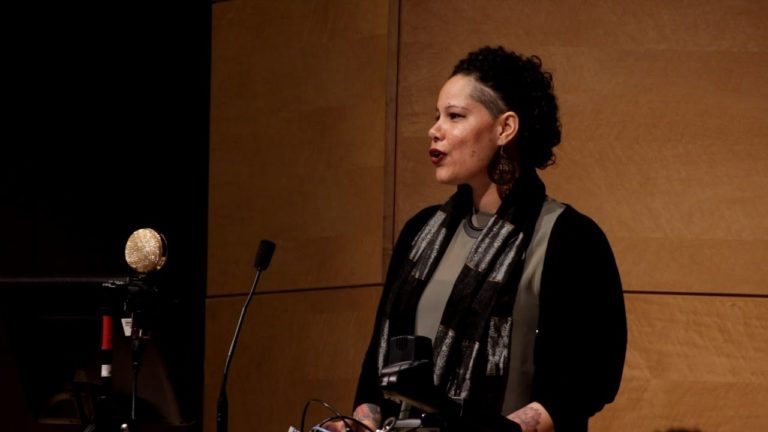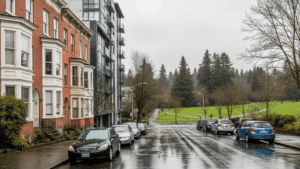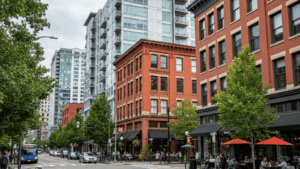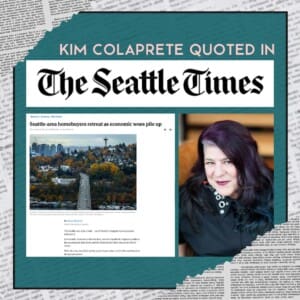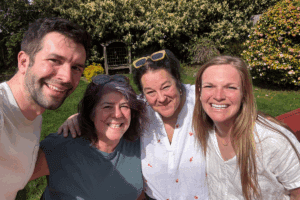When Nikkita Oliver was presented as the face of the newly formed Peoples Party, there was an immediate fervor among activists and artists already familiar with her work. Her base is energized and vocal, and she has received endorsements that reflect her popular appeal as a candidate that more plainly embodies Seattle’s progressive image (which has often not matched its actual politics). That includes endorsements from the city’s main weekly newspapers, Seattle Weekly and The Stranger. Even those endorsements admit that Oliver is not a conventional candidate, and certainly not establishment, but in these times, people may not be looking for conventionality.
What’s most important, of course, is where the candidates stand on policy and what vision they have for Seattle. Here are Nikkita Oliver’s answers to our questions, printed as we received them via email.
Arts Support and Funding
The wry question in the local art scene these days is, “How fast are you going to move to Tacoma?” Seattle needs a thriving arts community to be a truly cosmopolitan city. The Arts & Cultural Districts program is in its nascence, and its efficacy is still in question. How do you see yourself as the mayor increasing and supporting our local arts communit
Not only does art make Seattle a cosmopolitan city, it offers the city invaluable culture, tradition, and healing to stand on. From muralists to dancers, and musical arrangers to MCs, artists help make Seattle the place that thousands of people want to move to each month. But we must appreciate that the value of our local artists is far beyond their art. Our artists bring this city to life; they offer an identity for all of us to embrace.
However, if we are not careful, we will displace all of the culture, tradition, and healing. Gentrification doesn’t care who stands in its way, it will clear the way for the highest bidder—regardless if the person being displaced is a promising artist with a small business or world famous artist that has lived in the CD for 35 years.
As an artist, I completely understand how difficult it is to live in this city as an artist, having to take on multiple jobs just to be able to pay my rent and continue honing my craft.
So what do we do? We invest in our local artist and artist communities. The city must make a deliberate effort to preserve affordable housing for artists, while also creating affordable work space for artists. It’s a sad day when work space has become just as, if not more expensive than an artist’s apartment. I can offer ideas like creating more work/live housing opportunities to expanding and strengthening our art districts with more investment from the city — but these are givens. What has been lacking in Seattle, is the willingness to listen to artists and hear what needs can be met and what support can be provided by the city. No one can give a better answer of what is needed than the artists being most impacted by this affordability crisis.
In addition to keeping our artists in Seattle, I believe strengthening our local arts community is also done by investing in art education at our schools.
All students should have access to arts education, because it shows a commitment to preserving the culture and significance. According to national research, low-income students at arts-rich high schools are more likely to graduate from high school and pursue college. Studies reveal that children and youth who do not have high involvement in the Arts are three times more likely to drop out of school than children and youth who do. Furthermore, evidence shows that involvement in the Arts is associated with gains in math, reading, cognitive ability, critical thinking, cultural preservation, and verbal skill. Arts education improves student motivation, concentration, confidence. Arts education also teaches teamwork, problem solving, and solution building; all essential 21st century skills.
I will seek to expand the City’s current financial contributions to Creative Advantage to increase the number of schools receiving arts educators and teaching artists. I would also broaden the number of Out of School Time (OST) arts education opportunities available in those schools experiencing the highest levels of racial and economic inequality within the school district.
When we invest in school arts, we begin to strengthen the educational pipeline while at the same time showing our students the importance of art—leading them to a life of appreciation of its importance in our city.
Affordable Housing/Homelessness
Housing, homelessness, and affordability are often entwined but have different solutions. Without a doubt the housing levy dollars have not been making its way back into the community as it has in the past. Rental advocacy is starting to make its way through the community with different responses. Regardless, housing is a global issue and there is not a lot we can do about rising home prices. However, there is a lot we can do to help our homeless and create better housing options for those who make below the average income in Seattle. Specifically, how would you better manage the money from the housing levy, create downpayment assistance programs, and provide permanent housing for our homeless community? Considering that drugs, alcohol and mental health issues are intertwined within this community, what is your holistic approach to dealing with homelessness in Seattle?
We are facing a housing crisis of unbelievable proportions – yet the city is not acting swiftly enough to curb the harm that is being done.
The current requirement for affordable housing is woefully inadequate. There are many ideas to address the housing crisis that HALA does not encompass, but has been floated at different levels through City government:
- Zoning. We should examine closely the zoning regulations to better determine where a cultural and neighborhood sensitive zoning can be adjusted to achieve healthy density; which should also include considerations for expanding opportunities to create detached units in single family zoning (this has proven to be highly effective).
- 25% Inclusionary “affordable” units in large developments. We must also re-evaluate the definition of “affordable” because in many instances it doesn’t include the residents that need it most. We cannot be dissuaded by developers that say “the numbers don’t pan out”—that hasn’t been true in other cities around the country where development is still taking place with a required 20%+ affordability.
- Rent Control. The Peoples Party encourages rent control as one tool to fight displacement of Seattle’s vulnerable populations. It does not increase inventory—another tool necessary in the fight against displacement—and is a stop-gap in the fight against displacement. Nonetheless, Seattleites have a right to stay put and rent control will be a small tool in exercising that right. City-Owned Housing. Utilizing City surplus lands to create City-owned housing and taking housing off the free market will result in, obviously, the City having more control over the definitions of “affordability” and changes in market.
- Community Land Trusts. We should explore the expansion of community land trusts where residents, tenants, and communities can be self-determined in owning property to maintain affordability. Community Land trust ownership programs keep families in their affordable housing and create paths to equitable/co-operative ownership, which successfully curbs gentrification.
- Down Payment Assistance. This is almost a necessity if we are seeking to truly curb gentrification. While protecting renters from displacement is a priority, we have to create paths to ownership as well. For those that are unable to save for a big down payment, which is a barrier to many renters, the city should be able to step in and support those families that want to purchase.
- Regional Solutions. Additionally, we will strengthen the relationships and make the pitch that this must become a regional solution. If we are to rely exclusively on Seattle to build the necessary supply to level out prices, we will never achieve that goal. Our neighbors to the south and north of Seattle should examine their zoning as well to identify how they can achieve greater, healthy density that could help absorb the influx of people.
Note: While rent stabilization would require some legal challenges, it is worth the work. We need to find ways to ensure that residents are not pushed from their homes by skyrocketing rents. (We must pair rent stabilization with other market intervention strategies and thoughtfulness about how rent stabilization is constructed in order to insure that small landlords are able to remain functional and profit at the level they require to effectively manage their properties.)
Some revenue options I would explore as mayor include:
- City budget – We have a $5.6 billion budget with a $1.2 billion general fund. We could tighten the budget and re-prioritize based on needs.
- Speculation tax – Tax those real estate investment firms that are only looking to make a profit off of our communities, without considering the long-lasting effects of their displacement. This would fund affordable housing options for moderate to low-income families and curb speculator behavior in our market, stabilizing it.
- Additional taxes – This would include luxury taxes, a progressive income tax, progressive corporate B&O, a corporate head tax, and taxing unearned wealth.
- Impact fees – We need to hold our developers and corporations accountable by requiring they invest into our city’s infrastructure especially transportation.
- Partnerships – Non-profit organizations and corporations could help us build more affordable housing.
Homelessness
- Low Barrier Shelters/Transitional Housing (Housing First): The evidence shows that Housing First strategy, with immediate, permanent, low-barrier, supportive housing to chronically homeless people, yields high rates of housing retention, vis a vis continuum-of-care or linear residential housing. We are always open to new and better evidence, however there is no question that getting rid of the moral policing that accompanies many non-Housing First models produces better outcomes for our homeless populations.
- Build More Housing of all types—shelters, transitional, and permanent. Simply put, there needs to be more accessible housing.
- Coordinated care is not working effectively for us. It is unfortunately bottlenecking the resources. We need to re-assess how we get people connected to housing and support.
- Navigation Centers. The San Francisco model for Navigation Centers, which are places where people can take a shower, use the bathroom, access laundry and dining facilities, and store their belongings, will improve the lives of people living outside in Seattle. Importantly, Navigation Centers include round-the-clock case management, mental and behavioral health services, and connections to benefit programs and housing. In order to ensure success, it is imperative that neighborhoods understand and agree that Navigation Centers should become part of their communities. Ultimately, there must be neighborhood buy-in in order for Navigation Centers to successfully serve people in need.
- Stop sweeps and divert those funds to providing resources to encampments including garbage removal, water, compost toilets, on-site mobile units with case managers, etc. I have personally met with members from the encampment communities and with case managers and all say that the City has been entirely unwilling to effectively work with them. In fact, they City has made deals with them and failed to deliver what they agreed to and all while continuing the sweeps.
Transportation
Seattle consistently passes transportation levies to support buses, bike lanes, sidewalk expansion, and more. Yet our roads are in poor condition, especially in the non-core neighborhoods, and resources are not distributed evenly across the city. How are you going to better manage the city’s transportation dollars?
We better manage our city funds by having a practice of vision and execution of that vision through a lens of community and equity. Entering the mayor’s office, this would be our vision from Day 1.
- Pedestrian Safety/Vision Zero. Safety should be the central concern of all conversations at SDOT. Not only should it be a consideration in new decisions for transportation and infrastructure, but pedestrian and traffic safety should be treated as a project with a timeline and clear goals. I think Vision Zero has done a fantastic job making safety a priority and SDOT should continue to prioritize Vision Zero so we meet the goals we have set for ourselves. We need to be creative in our approach and critical in our assessment of the progress we have made.
- Expanding the frequency of service. Seattle needs a major expansion of bus and light rail service. We have to work to decrease transit times, as well as reduce fares to increase transportation access in our city. As housing prices push more and more cash-poor, brown and black folks out of Seattle, it is important that people be able to rely on public transportation to access the services, jobs, schools and community that remain within Seattle. Students, Seattle College students in particular, are living in the intersection of rising rental costs and inaccessible transportation systems. We need to develop a response to this growing need and a comprehensive plan for support our residents. Therefore, we must ensure that our transit is not solely focused on those in the core, but also those that rely on transit for their livelihood, especially those that are being displaced further and further out to the north and south end of our city. This must also include a regional vision in collaboration with King County and other cities.
- Follow-through in our commitment to mass transit. Seattle presents itself as a progressive and green city but too often our values and policy, which reflect our commitment to mass transit, are not enforced. The functionality and purpose of bus-only lanes is undermined as cars frequently violate the rules. Bus-fare stipend programs are abandoned or static due to the lack of oversight and dialogue between riders and transit officials. Commuting Seattleites know these things have fallen through, but their voices are rarely valued and incorporated into policy to the degree they should be. Because of this lack of follow-through or concessions to the voices of developers, we fall short of our goals or create new problems for the commuters of our city. As mayor, I would check in regularly with those who are working for and relying on transit to make sure the policies we pass are being enforced and that everyone has the support to do their job and the access to resources which allow public transit to flourish. This will ensure that as a city we remain true to our values and support our environmental and economic goals.
Policing
Despite five years of federal oversight under a consent decree, the Seattle Police Department’s reputation for biased policing and excessive force persists. This view is not helped by projects like the Bunker and the Youth Jail. At this point, the most visible actions by the SPD typically involve quashing protests and demolishing homeless encampments–not the image one would expect from a Sanctuary City. As mayor, what reforms would you push for in policing and its overall place and perception in the city?
My life has been committed to social justice. From organizing youth, to demanding our government leaders show us that Black Lives (actually) Matter in this city, social justice has been at the core of my being.
It is my life purpose to focus my social justice efforts on our youth. The youth are our future and they deserve the humanity to excel in a world that has stacked the odds against them, while still knowing that they will be the ones that bring us closer to the world we all deserve. This is why I am honored to say that I am the only candidate in this race that has stood on the front lines in solidarity with the amazing organizers and community who sought to Block the Bunker and make sure No New Youth Jail is built.
When our community members are being senselessly murdered by police and no clear action is being taken by our government to change these outcomes, I have to wonder, why isn’t addressing this issue more important to our city leaders? I have spent years advocating for criminal-legal reform that makes the safety of communities of color a priority, and we will continue do so as mayor.
I believe that in order to reform our criminal-legal systems and develop a public safety apparatus that appropriately and adequately responds to the needs of our communities, We MUST have people of color and community members that have been directly impacted by our criminal-legal system involved in creating public safety policies. This means uplifting the voices of and centering the experiences of those most impacted by the issues in how we find solutions.
Since it was first created, our city’s Community Policing Commision which is made up of civilians, has submitted upwards of 50 suggestions for reforming our city’s policing strategies. To this date only a few of these suggestions have actually been implemented. As mayor, I will make sure that the work of our commissions and community members are actually taken into account. I will also fight to have our Community Policing Commission made a permanent and politically-independent entity in our government.
We need to continue the necessary transformational work relating to policy accountability and the criminal legal system. The officer involved shooting and, ultimately, killing of Charleena Lyles shows that we still have work to do in transforming the Seattle Police Department. The Mayor plays an incredibly important role in this work. In the near future we need Judge Robart to “okay” the newest legislation, complete bargaining with the police force, hire the inspector general, fully fund the CPC, and get more civilians involved in the Office of Police Accountability. In the long term, we need to make significant changes to the culture of policing and ensure that we have permanent accountability systems that not only give voice to the most impacted communities but which also ensure that justice is truly served for all. Lastly, we prosecute a lot of “quality of life crimes” and therein criminalize poverty. We need to make some significant changes to Seattle Municipal Court and our human services department to ensure that we are getting people supports before they become court involved as a method for prevention. Prosecution and incarceration are costly and we can be more humane and fiscally responsible by addressing these issues on the front end.
Southeast Seattle
Every political season candidates come down to Rainier Valley for a photo op and then disappear for another four years. Meanwhile the resources in our very wealthy city do not make it south of the ship canal. There is a long history of redlining through actual practice or out of habit in our city. Many mayors have had pet projects they have installed in south Seattle but have not created the infrastructure in the neighborhood to support these projects. As a sanctuary city many of the residents we want to protect reside south of the ship canal. Will you be the mayor will make an effort to create safer streets, add curbs and sidewalks, mow the city owned portions of the mediums, and truly make a positive impact to the the neighborhood? Or are you a photo op person?
South Seattle IS my community. For the majority of my time living in Seattle, I’ve lived, worked, and organized in South Seattle. Over 80% of the members of the core team for the Peoples Party is from South Seattle. This campaign grew out of South Seattle. I wouldn’t be allowed to be a photo op candidate because our community would not stand for it. Finally, there is too much at stake for our South Seattle community.
I will not be the mayor that makes an effort—effort isn’t enough. I will be the mayor that fights, unequivocally, for the equity and justice of our most disenfranchised communities. Our youth are counting on it; our elders are counting on it; and our city will be better because of it.
Education Funding
Now, more than ever, Washington state needs to step up and fully fund education. The resulting impact to funding education will be an increase to the property taxes here in Seattle. The bulk of the fight is happening in Olympia. How do you see yourself working with Olympia to make sure Seattle gets the resources it deserves without harming poorer homeowners?
The lack of educational funding for Seattle’s schools is due primarily to the Washington State Legislature’s failure to fulfill its constitutional duty to fund schools as detailed in the state supreme court’s McCleary decision. In order to compensate for the state’s failure to comply with the law, Seattle has raised local levies to provide essential supplemental funds. Seattle’s Families and Education property tax levy is up for renewal by voters in 2018, as is the Seattle Preschool Program levy. The current Families & Education levy provided for a $235 million investment in education over seven years, while the Seattle Preschool Program added $58 million over four years. There is a remarkable opportunity to build on the long legacy of voter’s desire to support education in our City, while re-envisioning the role of the City as a partner to the district, centered on the priorities outlined above.
One critical problem with the distribution model for levy funds has been the insistence by the City to tie unreasonable performance targets to schools that accept these funds. For example, the City demands that funding for critical services to the schools be contingent upon rising test scores in reading and math—and if those targets are not met, the city withholds funding from that school. A rising movement against high-stakes testing in Seattle and around the country has thrust into the spotlight the inappropriateness of denying funding to struggling schools, which inevitably hurts children who attend these schools.
What Do We Do About It? We will seek to immediately end the practice of withholding City levy dollars to schools based on test scores. City funds would be distributed to schools, in consultation with Seattle Public Schools, based on need. In addition, Nikkita will partner with families, the Seattle Public Schools and the educators union, and the Seattle Education Association to build a campaign to pressure the state legislature to fully fund education as outlined in the McCleary decision.
Sanctuary City
For all the reasons above, there is reason to be skeptical that Seattle can be more than well-meaning in calling itself a Sanctuary City. A housing crisis, questionable policing, unaddressed histories of racial bias and segregation (and anti-immigrant sentiments) that persist to this day all seem to prevent us from providing safe haven for people fleeing violence elsewhere. As mayor, what would you do to lay the foundation for being a Sanctuary City, in a way that integrates with the many other problems our city faces?
Given new federal policies that unjustly target immigrant and refugee communities in the US, it is paramount that we as a city work to protect our immigrant residents. Our current mayor has declared Seattle a “sanctuary city” but we need to match this title with changes to policies and practices to truly protect our residents. This includes addressing the issue of affordability. How can we call ourselves a “sanctuary city” if the people who need “sanctuary” cannot afford to live here?
We also need look at the issue comprehensively, working with advocacy organizations and communities to better understand the issues immigrants and refugees are currently facing. This means we need to commit to being in direct dialogue with immigrants, refugees, and undocumented persons and ensure that there are avenues through which these communities can organize, get support, voice their concerns and advocate for their unique needs.
Given that the needs of immigrants and refugees don’t just stop at our city lines, we must develop a regional strategy for protecting immigrants and refugees, and as mayor, I will work with neighboring cities to develop a comprehensive network of support for our residents.
Earlier this year, I was asked by community members to work with other attorneys and community organizers in King County to assess the gaps in policy that keep our regional governments from protecting immigrants. What we found was that basic practices such as how we transport people locally, how we tag people in our local precincts and how we criminalize low-level offenses can leave our undocumented residents vulnerable to ICE intervention. As mayor, I will work with communities to further investigate the simple changes we can make in our region to better protect our residents and their families.
With all that being said, I want to provide tangible policies we can make immediately to protect our immigrant and undocumented communities. We must ensure:
- Policies limit communication between local law enforcement and immigration enforcement regarding people in custody;
- ICE cannot use city facilities or resources for civil immigration enforcement, including “check points” or traffic perimeters;
- All people have access to city benefits and services regardless of immigration status;
- City agencies and employees do not request information or investigate a person’s citizenship or immigration status;
- City databases, facilities, equipment, personnel, and other resources cannot be used for the purpose of implementing registries; and
- Utilize public funds to provide legal defense when our immigrant and refugee residents do face deportation proceedings.


